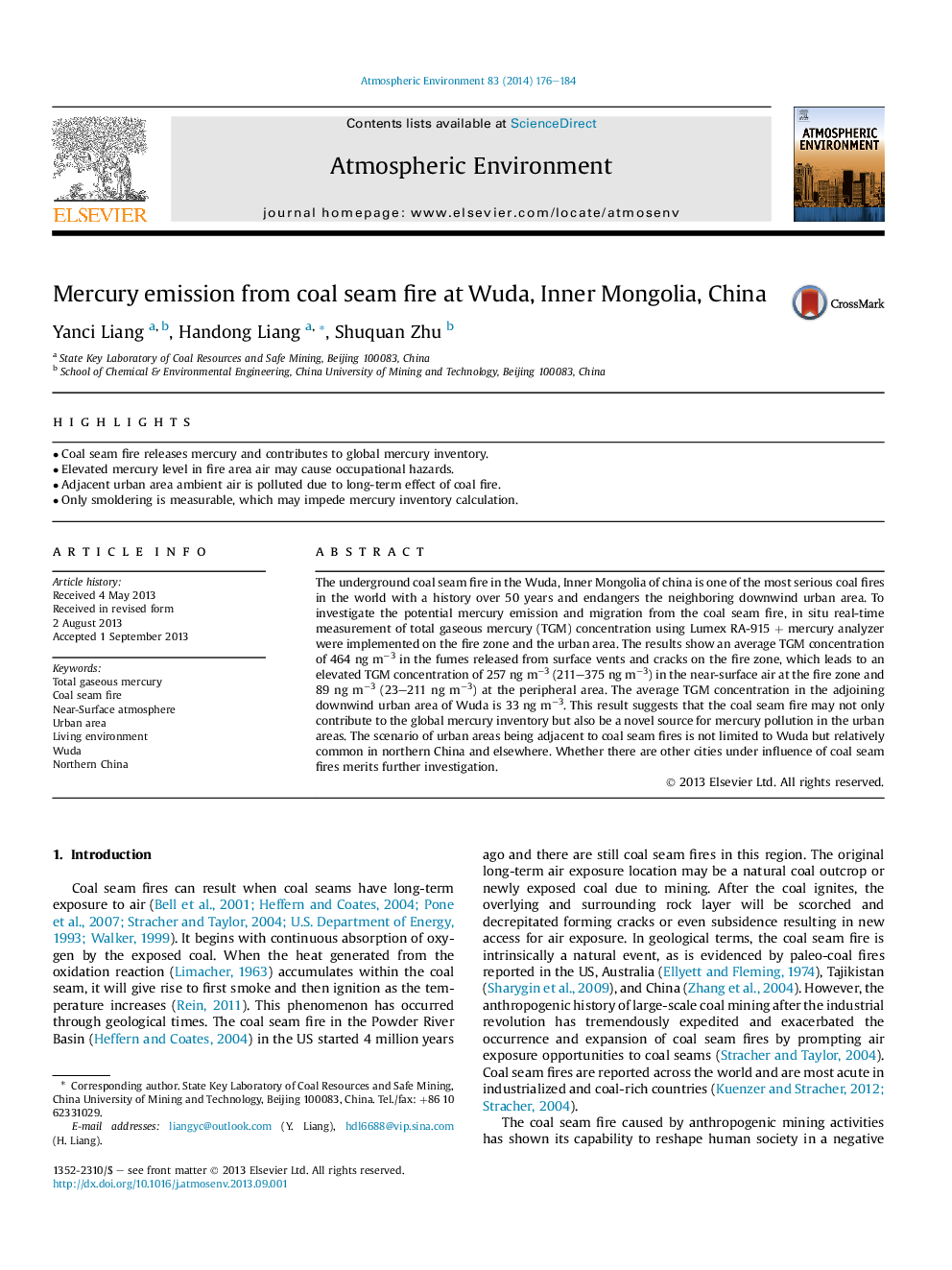| Article ID | Journal | Published Year | Pages | File Type |
|---|---|---|---|---|
| 6340961 | Atmospheric Environment | 2014 | 9 Pages |
â¢Coal seam fire releases mercury and contributes to global mercury inventory.â¢Elevated mercury level in fire area air may cause occupational hazards.â¢Adjacent urban area ambient air is polluted due to long-term effect of coal fire.â¢Only smoldering is measurable, which may impede mercury inventory calculation.
The underground coal seam fire in the Wuda, Inner Mongolia of china is one of the most serious coal fires in the world with a history over 50 years and endangers the neighboring downwind urban area. To investigate the potential mercury emission and migration from the coal seam fire, in situ real-time measurement of total gaseous mercury (TGM) concentration using Lumex RA-915 + mercury analyzer were implemented on the fire zone and the urban area. The results show an average TGM concentration of 464 ng mâ3 in the fumes released from surface vents and cracks on the fire zone, which leads to an elevated TGM concentration of 257 ng mâ3 (211-375 ng mâ3) in the near-surface air at the fire zone and 89 ng mâ3 (23-211 ng mâ3) at the peripheral area. The average TGM concentration in the adjoining downwind urban area of Wuda is 33 ng mâ3. This result suggests that the coal seam fire may not only contribute to the global mercury inventory but also be a novel source for mercury pollution in the urban areas. The scenario of urban areas being adjacent to coal seam fires is not limited to Wuda but relatively common in northern China and elsewhere. Whether there are other cities under influence of coal seam fires merits further investigation.
